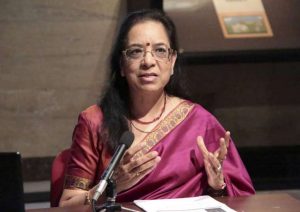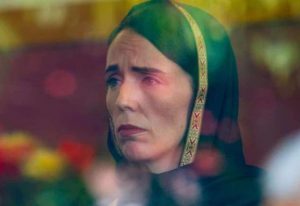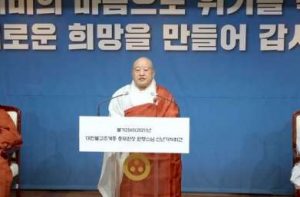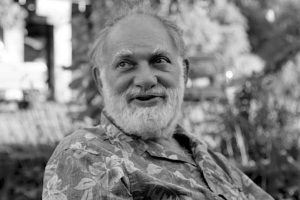
Buddhists comprise nearly 0.6 per cent (approximately 1 million people) of Bangladesh’s total population of some 163 million. Muslims are the unquestioned majority at 90.39 per cent. With such a small population of Buddhists, is it even possible, let alone ideal, for Bangladesh to adopt some form of “Buddhist diplomacy” to solve some of its national problems? As a Buddhist monastic born in Bangladesh, I’m confident that my country can draw on its Buddhist heritage to strengthen bilateral relations with Buddhist-majority countries such as Myanmar, Thailand, and Sri Lanka. As a recipient of Rohingya refugees from Myanmar, Bangladesh could possibly even utilize its Buddhist voices to address problems such as the ongoing Rohingya crisis.
The Dharma has flourished in the region now known as Bangladesh for more than 1,000 years. Bangladesh was the homeland of renowned Buddhist scholars such as Atish Dipankar (980–1052), and is also home to great Buddhist monasteries like Sompura Mahavihara, one of the country’s most important archaeological sites, designated as a World Heritage Site by UNESCO in 1985. It is said that Buddhism gradually lost its prominece with the ascent of Muslim rule in the Indian subcontinent during the medieval period, although it is not fair to say that Buddhism went extinct, since it has endured in certain areas, such as the Chittagong Hill Tracts. The presence of Buddhism also lives on in ruins of great Buddhist monasteries and stupas that can be found across the country.
In 2015, the Bangladesh government launched an initiative showcasing the country’s Buddhist legacy. In collaboration with United Nations World Tourism Organization (UNWTO), Bangladesh for the first time hosted an international conference titled “Developing Sustainable and Inclusive Buddhist Heritage and Pilgrimage Circuits in South Asia’s Buddhist Heartland” in Dhaka. The event was an open dialogue for sustainable development and the promotion of cross-border tourism circuits and routes in South Asia and the Asia-Pacific region.
In recent years, Saida Muna Tasneem, ambassador of the People’s Republic of Bangladesh to the Kingdom of Thailand, has engaged in Buddhist diplomacy to promote ties between Bangladesh and Thailand. Since taking up her post in December 2014, she has seized numerous opportunities to develop and promote cultural and religious links between the two nations. She has said on record that ancient Bangladesh was Buddhist and many Bengali Buddhists have greatly contributed to the propagation of Buddhism in other countries, including Thailand.
In an interview with The BigChilli magazine in Thailand, Tasneem pointed out that although Bangladesh is now a Muslim-majority country, it is a secular nation and cultural assimilation is an integral part of its identity. “This is what I am focusing on; I am trying to stimulate greater cultural and economic connectivity,” she said. “When I came [to Thailand] I didn’t have any idea about certain things, especially the cultural similarities between our two countries. I learned that the Thai and Bengali languages are both based on Sanskrit and Pali.”
“Actually, Her Royal Highness Princess Maha Chakri Sirinthorn has always taken keen interest in Sanskrit,” Tasneem added. “She studied the language at Chulalongkorn University and she still studies.” (The BigChilli)

Tasneem is reportedly keen on sharing her knowledge of, and interest in, Buddhism. She frequently organizes cultural and religious programs that are attended by high-profile scholars and diplomats from both countries. In 2015, Thai minister of culture Vira Rojpojchanarat led a delegation to witness the New Year celebrations in Bangladesh. On 9 December of that year, the 88th birthday of Thailand’s late King Bhumibol, Tasneem organized a Buddhist chanting ceremony that was attended by nearly 300 Bangladeshi monastic students studying in Thailand and more than 100 monastics from Thailand and elswhere, including Cambodia, China, Japan, and Myanmar. Tasneem is also working with Thailand’s Mahachulalongkornrajavidyalaya University and Mahamakut University to broaden academic exchange with Bangladeshi students.
In recent years, due to violence against Muslims in Buddhist-majority countries such as Myanmar and Sri Lanka, Bangladeshi Buddhists have been experiencing discrimination from Muslims, including the destruction of Buddhist property, physical violence, torture, and even murder. In September 2012, Muslim extremists in Ramu, southeastern Bangladesh, torched more than 20 Buddhist temples, their Buddha statues and ancient manuscripts, as well as the homes of Buddhist residents. Having been on the receiving end of such horrific crimes, Bangladeshi Buddhists have tried to build bridges with Muslims rather than retaliate. For example, Hefajat-e Islam convened with Buddhist leaders in December 2016 to hold interfaith dialogues (Hefajat-e Islam is a group of Islamic teachers and students). The organization has appealed to the Muslim community to support the rights and safety of non-Muslims, including Buddhists.
Bangladesh has made numerous moves to reach out to Thailand through the years, and it can seriously consider extending similar diplomatic overtures to Myanmar. Building bilateral relations on the foundation of a shared cultural and religious heritage is one possible way to build awareness among students and teachers and intellectuals that might in some way alleviate the Rohingya crisis at a grassroots level. Bangladesh’s Buddhist legacy can be further linked to other countries in Asia, in turn providing a firm foundation to explore new relationships with Buddhist nations in the 21st century.
See more
Linking two nations with remarkable similarities (The BigChilli)
International conference on Developing Sustainable and Inclusive Buddhist Heritage and Pilgrimage Circuits in South Asia’s Buddhist Heartland in collaboration with UNWTO (World Tourism Organization)
Bangladesh embassy in Thailand highlights Buddhist heritage of both countries (bdnews24.com)
Related features from Buddhistdoor Global
Buddhistdoor View: Buddhism at the Heart of Sino-Indian Relations
Marginalized and Ignored: The Corrosion of Bangladeshi Minority-Government Relations
Diplomacy, Heritage, and Cultural Pride: Reviving the Buddhist Legacy of Islamic Pakistan
Buddhist Archaeological Sites in Bangladesh
Ramu Tragedy – Bangladesh Government and World Media
Celebrating the Dream of Religious Plurality: The Buddha Purnima Festival in Bangladesh
The Revival of Buddhism in Indo-Bangla Territory: A New Perspective
Jewel in the Crown: Bengal’s Buddhist Revival in the 19th and 20th Centuries
The Birthplace of Atish Dipankar Comes to Light
Buddhism in Northern Europe: A Snapshot – Khuong Viet Temple, Norway
Related news from Buddhistdoor Global
Pakistani Press Attaché in Sri Lanka Known for Deploying “Buddhist Diplomacy” Leaves Post
Pakistan Sends Sacred Buddhist Relics to Sri Lanka for Vesak Festival
Bangladeshi Buddhists Call for Peaceful Solution to Rohingya Crisis
Buddhist Monastery in Bangladesh Serves Iftar to Muslims During Ramadan
Hundreds of Homes of Indigenous Buddhists in Bangladesh Burned Down by Bengali Settlers
Forced Religious Conversion of Children in Bangladesh’s Chittagong Hill Tracts on the Rise











